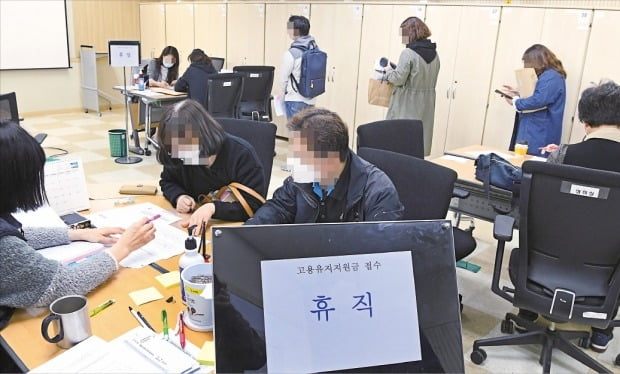![[단독] Subsidies from the cultural government... 'Illegal supply and demand' 3 cases every two days](https://i0.wp.com/img.hankyung.com/photo/202102/AA.22468149.1.jpg?w=560&ssl=1)
A daycare center in the Gyeonggi area registered 0-year-old children and nursery teachers who do not exist, and received a subsidy of about 16 million won last year. Government-sponsored childcare fees and subsidies for childcare staff, which receive 470,000 won per child, went into the director’s account.
Travel agency B in Seoul is being investigated by the police by tricking an employee who is on the way to work as a leave of absence and receiving more than 100 million won in employment maintenance support, which is a subsidy for paid leave due to the novel coronavirus infection (Corona 19).
Since the inauguration of the Moon Jae-in government, the number of cases of illegal subsidies has been increasing rapidly. Criticism has been raised that the management of the subsidy business is not being properly carried out amid the sharp increase in various cash subsidies.
3 cases of illegal supply and demand detected every two days
According to the Welfare and Subsidies Report Center run by the National Rights Commission on the 26th, a suspicion was revealed out of the number of reports of fraudulent subsidies received last year, and 612 cases were transferred or sent to relevant ministries. It means that there were 51 cases per month and 3 cases per second day.
The number of incidents of fraudulent supply and demand has been increasing rapidly since the inauguration of the Moon government. The number of arrests from 214 in 2016 increased to 234 in 2017, 492 in 2018, and 546 in 2019, and surpassed 600 for the first time last year. It increased 2.8 times in four years. Considering that the number of reports received at this center due to Corona 19 last year was 1187 cases, 22.7% less than 1536 cases in 2019, some point out that the actual cases of illegal supply and demand would have been much more than this.
The significant increase in illegal supply and demand is due to the government’s large increase in subsidy budgets. The government subsidy, which was 59.6 trillion won in 2017, jumped 64.2% to 96.9 trillion won based on this year’s budget. Considering that the fourth disaster support payment is scheduled for next month, the subsidy is expected to exceed 100 trillion won. Subsidies for welfare and employment are increasing significantly. It is an interpretation that cases of fraudulent supply and demand are also increasing as many people rush to subsidies, which are blind money.
Any individual or company’deviation’
Subsidies are divided into’payment type’, which pays allowances to individuals who meet certain requirements, and’business type’, which subsidizes project expenses for improving people’s life. However, it was found that cases of illegal subsidies are occurring in all directions regardless of this classification.
It was found that the four employees of Chungnam C company continued to receive unemployment benefits equivalent to 16.1 million won even after they got a job. There was a problem with paid subsidies. They planned meticulously, such as not signing up for the four major insurances and not registering electronic commuting, but were caught in a field investigation. They were additionally collected about 30 million won, which is twice the amount of illegal supplies. In June, it was revealed that more than 3,000 people, including public officials and teachers, received’emergency livelihood funds’, which were paid to households with a median income of 100% or less, in addition to the government emergency disaster support fund.
There was also a hole in the business subsidy given to manufacturers of exhaust reduction devices attached to diesel vehicles. According to the Korea Rights Commission, about 30 billion won of subsidies paid through this project from 2015 to last year amounted to about 30 billion won. It was found that the cost of each company was calculated as much as twice as high, and the subsidy was excessive. The Kwon Ik Committee requested the Ministry of Environment and the Ministry of Land, Infrastructure and Transport to improve related subsidiary projects.
Need for subsidy restructuring
As cases of fraudulent subsidies continue to increase, opinions continue to be suggested that management and restructuring of various subsidiary projects are necessary.
A typical example is that the Ministry of Strategy and Finance and the Institute of Taxation and Finance requested adjustment of most projects in the extended evaluation of the government subsidy project last year. According to the 2020 National Treasury Subsidy Program Extended Evaluation Report, only 24 (10.0%) of the 241 subsidy projects subject to evaluation were evaluated as’normal promotion’. It was the first time last year that the rate of normal promotion evaluation fell to 10% in the extended evaluation of the government subsidy project. After recording 51.0% in 2015, when the total national treasury subsidy project was conducted, the downward trend continues, including 39.2% in 2018 and 34.5% in 2019.
This translates into the need to look at the entire subsidy project again. In response, Jin-wook Choi, a professor of public administration at Korea University, who is head of the National Treasury Assistance Project Evaluation Division, said, “I asked the government to make strong spending restructuring.”
The Kwon Ik Committee announced that it operates an annual’intensive reporting period for illegal subsidies’ to prevent illegal subsidies. Depending on the degree of contribution to the reporter, compensation of up to 3 billion won or up to 200 million won is paid.
Reporter Kang Jin-kyu [email protected]
